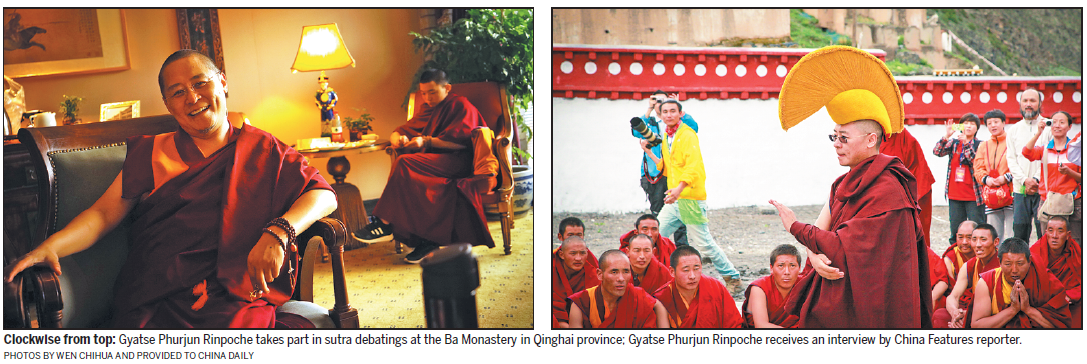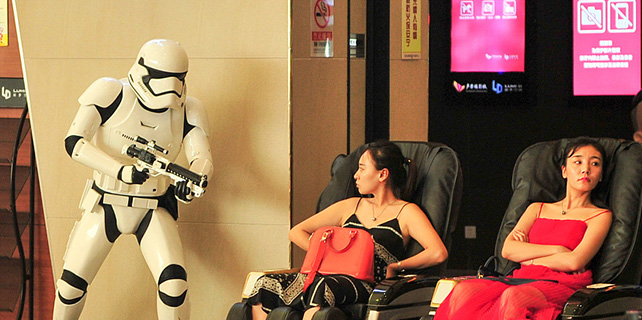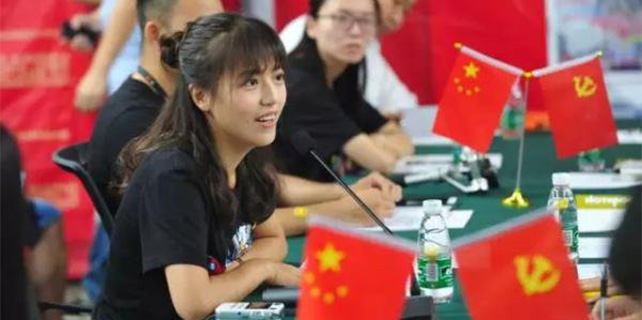The Poem with the crimson cassock

As for his early life, Gyatse Phurjun Rinpoche was born on May 29, 1981, in Qumarleb county in the Yushu Tibetan autonomous prefecture of Qinghai province.
He is the fifth child and the only son of a herdsmen couple and was known as Sonam Wangchug until 1995.
He was 14 when he was identified as the reincarnation of the 14 Rateng Living Buddha. The announcement came as a complete surprise because his formative years were no different from that of his peers.
In his childhood he performed well in school, and was later admitted to the Communication Technical School in Qinghai province to study civil engineering. Then, one day, his teacher informed him that his parents wanted him to return home.
It took him three days by bus to get home from the provincial capital Xining.
When he got home, he recalls, "the monks from the Ba Monastery were present.
"My parents had no idea that I was the reincarnated soul boy. But once I learned this, I told the senior monks that I wanted to study the dharma in the best institution in Tibet.
"Otherwise I would be just another Living Buddha unable to offer salvation to sentient beings, but living on their offerings."
In 1996, he was sent to the Sera Monastery in Lhasa, the capital of Tibet, to began his full-time Buddhist dharma education under Khenpo Gashi Ngawang Dadrak.
Sera is one of the three main monasteries in Lhasa, along with Ganden and Drepung, where Tibetan monks undertake advanced studies.
Tibetan Buddhism has four main schools: Nyingma, Sakya, Kagyu and Geluk.
Gyatse Phurjun Rinpoche belongs to Geluk School which adopted the reincarnation ritual in the mid-16th century.
Panchen and Dalai are lineage disciples of Tsongkhapa, the founder of the Geluk School.
Nowadays, reincarnation is largely accepted as an inheritance right among various schools in Tibet.
At the Sera Monastery, he studied Buddhist scripture, Tibetan literature, and history.
And he also attended debates on the sutras, from early in the morning to the late into the night every day.
Then, one day in 2001, his mentor, the Living Buddha Sharu Tong, told him that he should go to live with the Han Chinese.
"My mentor didn't say why or what for. And because of my mentor, I came to Beijing on Sept 11."
In Beijing, he lived with migrant workers in a hostel for several months.
"I remember practicing meditation everyday. I didn't know how to speak Mandarin Chinese, and I didn't have enough money for food, so I only had a slice of bread every day. Water was free at the hostel."
The hardships and the pangs of hunger influence his writings today.
His experiences taught him sympathy and tenderness for ordinary people. And it was in the hostel that he realized why his mentor had sent him to live among the Han: He was needed to promote Buddhism in the regions where the Han Chinese lived.
To help him realize this goal, he joined Beijing Foreign Studies University in 2005 to study English and Chinese. And during the next four years, he took graduate courses in Buddhist philosophy and social psychology at Peking University. His studies turned him into the articulate and modern monk he is today.
Speaking about his mission, he says: "My responsibility as a monk is to pass on the Buddhist spirit to everyone who is ready to accept it."
Unlike monks in ancient times, who were hermits living according to Buddhism doctrine in isolated monasteries and temples, the main thing about being a modern monk, Gyatse Phurjun Rinpoche says, is to be involved in the world and real social practices.
"You cannot save all living creatures from torment if the monastery shrinks from contact with human society and fails to understand what really plagues men's souls."
Meanwhile, Gyatse Phurjun Rinpoche also serves as a Living Buddha for the Lhari Tongkhang village outside the Sera Monastery.
He also keeps in contact with his family.
Every time he returns to the Ba Monastery, hundreds of people attend his dharma assembly, hoping he will bless them by touching their heads.
"But I am just an ordinary man who bears the light of the Buddha," Gyatse Phurjun Rinpoche says.
"For the most part, I am no different from anyone in society. 'Living Buddha' is just a title," he says, wearing a smile.
A dimple on his left cheek makes him look like a youngster next door. In fact, when he takes off his crimson cassock, Gyatse Phurjun Rinpoche can easily pass off as common man.
He enjoys the same things many urban young men enjoy: drinking good coffee; taking photos and sharing his interpretations of life on the social media platform WeChat.
"Tibetan monks all like the iPhone because it has a Tibetan writing system. So, we can text each other in Tibetan. It's easier, as it's our native tongue," he says. These days he spends half the year on the road, in Beijing, Shanghai, and Shenzhen, and in countries like the United States, Canada, and Australia, preaching Buddhist doctrines and explaining the practice of mindfulness in terms of contemporary life.
While he is in the West, he also studies Christian cultural values. His efforts are in keeping with the Buddhist belief in open-mindedness and the acceptance of change.
He also believes that Tibetan Buddhism can reduce the anxiety of modern life regardless of one's religious views.
Gyatse Phurjun Rinpoche is now writing his second book, tentatively called As Affectionate as Mother.
"Writing helps me think clearly and helps me with my anxieties," he says.
Contact the writer at chihuaw@gmail.com









